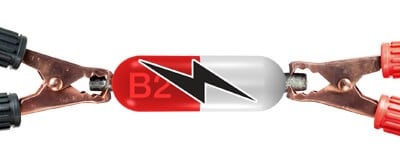Vitamins Give Batteries a Boost

By Moira Bell
It’s no secret that vitamins are good for you, but according to new research, vitamins might be good for your cell phone battery as well. A team of chemists at the University of Toronto have created a battery that stores energy using flavin from vitamin B2 — the same vitamin needed for a healthy liver, skin, hair and eyes. Researchers believe that this material provides a more affordable and environmentally friendly option than what is currently used in batteries.
Inside a Battery
Batteries consist of three basic parts: a positive terminal, a negative terminal and an electrolyte solution. When a battery is connected to a device, electrons flow from the negatively charged electrode of the battery, or the anode, out to the device, then into the cathode. Ions travel through the electrolyte solution to balance the charge. This process happens in reverse when the device is connected to a charger. The flavin acts as the cathode, the part of the battery that stores the electricity that is released when connected to a device.
Bio-Derived Batteries
Battery parts made from biologically derived materials are not new. The difference between this version and past iterations is that it’s the first to utilize bio-derived polymers, or long-chain molecules, for one of the electrodes. This means that the battery energy can be stored in a vitamin-created plastic. The alternatives include metals such as cobalt, which are more expensive, harder to process and cause more harm to the environment.
The chemists came across the right bio-derived material while testing various long-chain polymers. The specific type is referred to as a pendant group polymer, which is the group of molecules attached to a “backbone” chain of a long molecule.
Working with vitamin B2 that originates in genetically modified fungi, the team used a semi-synthetic process to prepare the polymer by linking two flavin units to a long-chain molecule backbone. The result allows for a high-capacity, high-voltage battery.
Currently, the team is working with a prototype that is the size of a hearing aid battery. In the future, they hope this discovery will lead to powerful, thin, flexible and possibly even transparent metal-free batteries for use in devices like smartphones and tablets. Might this soon mean it’ll take a text message a day to keep the doctor away?
Discussion Questions
- What are the benefits of using thinner, flexible batteries?
- Besides smartphones and tablets, can you think of any other devices that would benefit from a thinner, more flexible battery?
- Electrode
- Anode
- Polymer